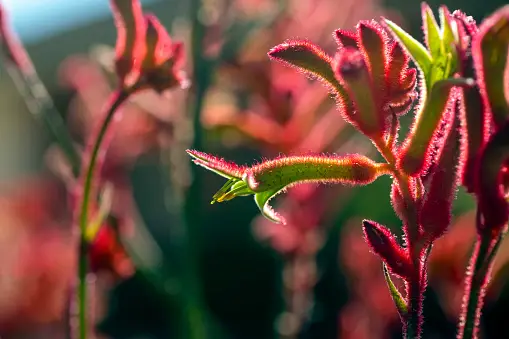Gardening is a cherished pastime for many, offering a sanctuary of peace and a direct connection to nature. In recent years, the focus has shifted towards using native plants in home gardens, particularly in places like St. Louis, MO. Native plants are those that have naturally evolved in a particular region over thousands of years. In St. Louis, utilizing native plants offers numerous benefits, both ecological and personal. This article delves into the myriad advantages of gardening with native plants in St. Louis, MO, highlighting their importance to the local ecosystem and to gardeners alike.
Enhancing Local Biodiversity
One of the most significant benefits of gardening with native plants in St. Louis is the enhancement of local biodiversity. Native plants have co-evolved with the local wildlife, providing essential habitats and food sources for a variety of species. Birds, butterflies, bees, and other pollinators rely on these plants for nectar, pollen, and seeds. By incorporating native plants into your garden, you help create a mini-ecosystem that supports these species, fostering a balanced and thriving local environment.
Supporting Pollinators
Pollinators such as bees, butterflies, and hummingbirds are crucial for the reproduction of many plants. In St. Louis, native plants like the Purple Coneflower (Echinacea purpurea) and Butterfly Weed (Asclepias tuberosa) are particularly beneficial for these insects. These plants provide the necessary nutrients and habitats that non-native plants often cannot match. By planting native species, gardeners contribute to the preservation and proliferation of pollinators, which are vital for food production and maintaining the health of the environment.
Water Conservation
Gardening with native plants in St. Louis, MO, also promotes water conservation. Native plants are adapted to the local climate and soil conditions, which means they generally require less water than exotic species. For instance, the Missouri Black-eyed Susan (Rudbeckia missouriensis) and the Wild Bergamot (Monarda fistulosa) are well-suited to the local weather patterns and soil types, reducing the need for frequent watering. This is particularly important in regions prone to drought or where water conservation is a priority.
Reduced Maintenance and Costs
Native plants are typically more resilient to local pests and diseases, reducing the need for pesticides and fertilizers. This resilience translates to lower maintenance requirements for gardeners. For example, plants like the Missouri Primrose (Oenothera macrocarpa) and the Aromatic Aster (Symphyotrichum oblongifolium) thrive with minimal intervention once established. This not only saves time but also reduces the long-term costs associated with garden upkeep.
Erosion Control and Soil Health
The root systems of native plants are often more extensive and deeper than those of non-native plants, providing excellent erosion control. These roots help stabilize the soil and prevent erosion, particularly in areas prone to heavy rain or on slopes. Additionally, native plants contribute to improved soil health. Their roots interact with local microorganisms in a symbiotic relationship that enhances soil fertility and structure. Plants such as the Big Bluestem (Andropogon gerardii) and Little Bluestem (Schizachyrium scoparium) are examples of native grasses that significantly benefit soil health in St. Louis gardens.
Preservation of Natural Heritage
Using native plants in your garden also helps preserve the natural heritage of the region. These plants are part of the local natural history and have intrinsic value. By cultivating native species, gardeners help ensure that these plants continue to thrive and are passed down to future generations. This practice promotes an appreciation of local flora and helps educate the community about the importance of native species.
Aesthetic and Cultural Value
Native plants offer unique aesthetic and cultural value. They bring a sense of place and authenticity to a garden, reflecting the natural beauty of the St. Louis region. Plants like the Missouri Violet (Viola missouriensis) and the Wild Sweet William (Phlox divaricata) add vibrant colors and textures that are representative of the local landscape. This not only enhances the visual appeal of a garden but also fosters a deeper connection to the region’s natural environment.
Climate Adaptation and Resilience
Gardening with native plants is a proactive approach to dealing with climate change. Native plants are naturally adapted to the local climate, making them more resilient to extreme weather conditions such as droughts, heavy rains, and temperature fluctuations. In St. Louis, plants like the Eastern Redbud (Cercis canadensis) and the Serviceberry (Amelanchier arborea) are examples of native species that can withstand the local climate challenges. By choosing native plants, gardeners contribute to creating more resilient landscapes that can better adapt to the impacts of climate change.
Educational Opportunities
Gardening with native plants offers numerous educational opportunities for both children and adults. It provides a hands-on way to learn about local ecology, plant biology, and the importance of biodiversity. Community gardens, schools, and botanical gardens in St. Louis often use native plants to educate the public about the local environment and sustainable gardening practices. This education is crucial for fostering an environmentally conscious community that values and protects its natural resources.
Conclusion
Incorporating native plants into your garden in St. Louis, MO, offers a wealth of benefits. From enhancing local biodiversity and supporting pollinators to conserving water and reducing maintenance costs, native plants play a vital role in creating sustainable and resilient gardens. They contribute to the preservation of natural heritage, improve soil health, and offer aesthetic and cultural value. Moreover, gardening with native plants fosters a deeper connection to the local environment and provides valuable educational opportunities. By choosing native species, gardeners in St. Louis can create beautiful, low-maintenance landscapes that support the health and well-being of the local ecosystem and community.

